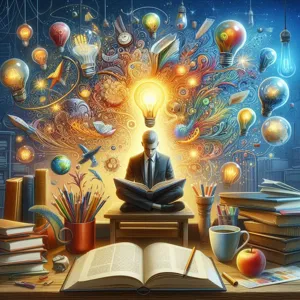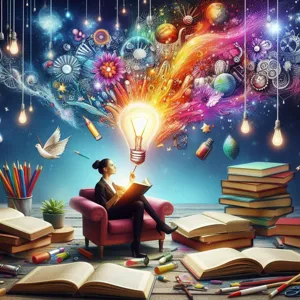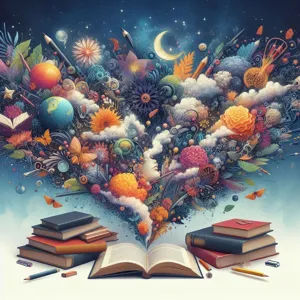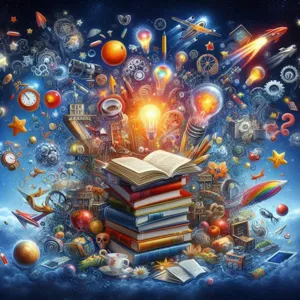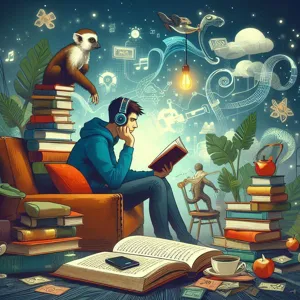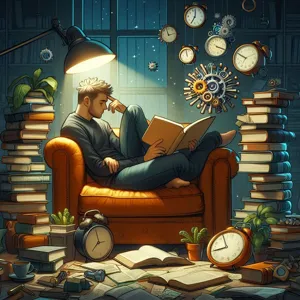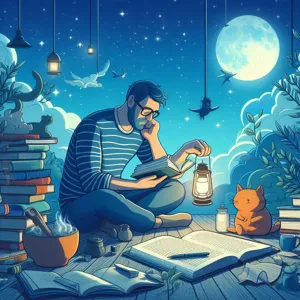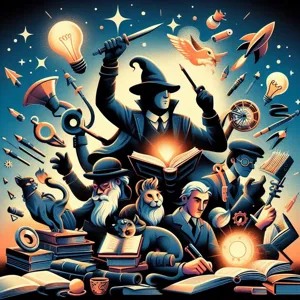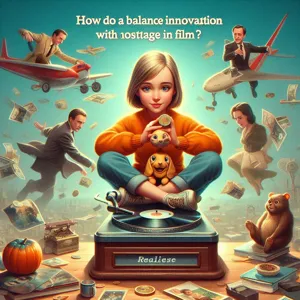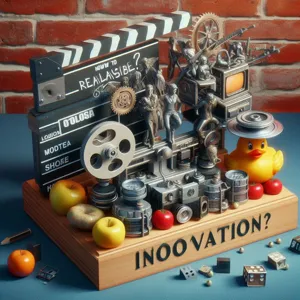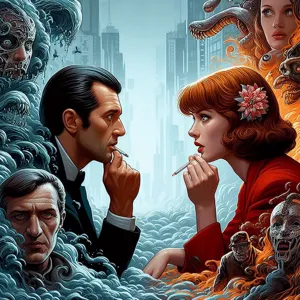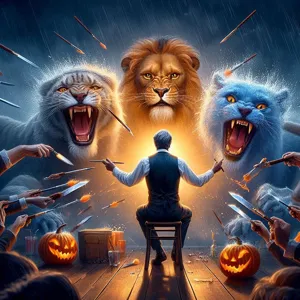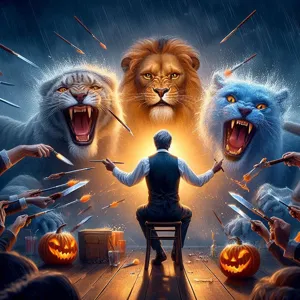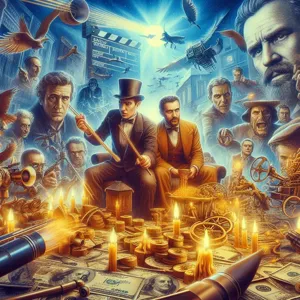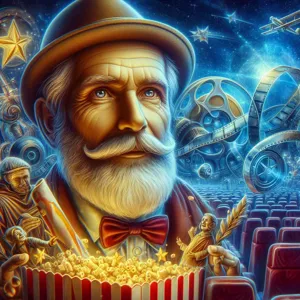In a world brimming with countless books and new releases appearing daily, finding your next great read can feel like searching for a needle in a haystack.
If you’ve ever finished a captivating novel and found yourself at a loss for what to pick up next, you’re not alone. Fortunately, the key to unlocking a treasure trove of literary gems lies in understanding your favorite authors and genres. This blog post will guide you through the art of book discovery, helping you navigate the vast literary landscape to uncover hidden treasures and overlooked masterpieces. From exploring similar authors to delving into genre-specific recommendations, we’ll provide you with the tools and strategies you need to ensure that your next reading adventure is as fulfilling as the last. So, grab your reading list and get ready to embark on a journey that will lead you to books you’ll love!
1. Understanding Your Reading Preferences
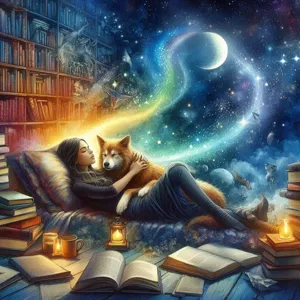
Understanding your reading preferences is the cornerstone of discovering new books that will resonate with you. Every reader has a unique palette, shaped by various factors such as genre, writing style, themes, and even the emotional journeys they seek. Start by reflecting on the books that have left a lasting impression on you. What genres do you gravitate towards? Are you drawn to the intricate world-building of fantasy novels, the thrilling suspense of mysteries, or the thought-provoking narratives of literary fiction?
Take note of the authors whose works you eagerly anticipate, and consider what it is about their writing that captivates you. Is it their character development, the richness of their prose, or perhaps their ability to weave complex plots? Understanding these nuances can help you create a clearer picture of your preferences.
Another effective strategy is to explore reader reviews and community discussions. Websites like Goodreads or book-related forums are treasure troves of information where you can see what resonates with others who share your taste. Pay attention to recommendations that align with your favorite authors or similar genres; this can lead you to hidden gems you might not have stumbled upon otherwise.
Lastly, don’t shy away from experimenting. Sometimes, stepping outside of your comfort zone can lead to discovering a new favorite. Keep a journal of your reading experiences, noting what you liked or disliked about each book. This self-reflection will not only deepen your understanding of your preferences but also enhance your reading journey. By taking the time to understand what truly makes you tick as a reader, you’ll unlock a world of new reads waiting to be explored.
2. The Importance of Author Influence
When it comes to discovering new reads, understanding the influence of your favorite authors is key. Each writer carries a unique voice, style, and thematic focus that resonates with different readers. By delving into the intricacies of an author’s body of work, you can uncover insights that guide you toward books that align with your tastes.
For instance, if you’re captivated by the lyrical prose of a beloved author like Haruki Murakami, you may find yourself drawn to other writers who weave surrealism into their narratives, such as Gabriel Garcia Marquez or Neil Gaiman. Similarly, if the sharp wit and social commentary of Jane Austen charm you, exploring the works of contemporary authors who echo her themes of romance and societal critique—like Curtis Sittenfeld or Sophie Kinsella—can lead to delightful discoveries.
Author influence also extends to the genres they inhabit. A mystery aficionado who revels in the intricate plots of Agatha Christie might explore the psychological thrillers of Gillian Flynn or the rich, atmospheric tales of Tana French for their compelling storytelling and suspenseful twists. Recognizing the nuances of an author’s genre can open doors to a plethora of new books that you might not have considered otherwise.
Moreover, many authors share their inspirations and favorite reads on social media or in interviews, providing a treasure trove of recommendations. Engaging with these insights can help you form a reading list brimming with books that reflect the qualities you admire in your favorite writers.
In short, leveraging the influence of authors you already love can be a powerful tool in your quest to unlock new reads. By analyzing their styles, themes, and even their recommendations, you can navigate the vast literary landscape with confidence, ensuring that each new book you pick up holds the potential for joy and connection.
3. Exploring Book Recommendation Systems

In the digital age, discovering your next favorite book can be as easy as a few clicks, thanks to advanced book recommendation systems. These algorithms are designed to analyze your reading preferences and habits, providing tailored suggestions that align with your tastes.
At the heart of these systems lies a wealth of data. They take into account factors such as the genres you gravitate towards, the authors you adore, and even the specific themes or tropes you enjoy. For instance, if you’ve recently devoured a gripping thriller by Gillian Flynn, a recommendation system might suggest similar authors like Paula Hawkins or Tana French, who excel in crafting suspenseful narratives with rich character development.
Many platforms, such as Goodreads or Amazon, utilize collaborative filtering, which looks at the preferences of users with similar reading histories to generate personalized recommendations. This means that by simply tracking your ratings and reviews, these systems can pinpoint books that not only align with your interests but are also favored by readers who share your taste.
Additionally, some services offer curated lists compiled by literary experts or fellow readers, which can introduce you to hidden gems you might not stumble upon on your own. These lists often highlight upcoming releases, diverse voices, or books that have received critical acclaim, ensuring you have a well-rounded reading experience.
Don’t overlook the power of community-driven platforms either. Engaging in book clubs or online forums can provide a wealth of recommendations and insights from fellow book lovers, allowing you to discover titles that resonate on a personal level. Whether you’re seeking the next great fantasy saga or a thought-provoking memoir, exploring book recommendation systems can unlock a treasure trove of new reads tailored just for you. So dive in and let technology guide your literary journey!
4. Utilizing Goodreads for Discovering New Reads
Goodreads is a treasure trove for book lovers seeking to expand their reading horizons. With its vast community of avid readers and comprehensive database, it offers a personalized experience that can help you unearth hidden gems that align perfectly with your taste. To get started, create an account and build your virtual bookshelf by adding your favorite authors and books. This simple step allows Goodreads to tailor recommendations and offer a curated list of titles that resonate with your preferences.
Once you’ve set up your profile, take advantage of the platform’s powerful search and recommendation features. Use the “Recommendations” tab, where you’ll find a selection of books that others with similar tastes have enjoyed. You can also explore lists and genres that pique your interest, helping you stumble upon new authors who write in styles you adore.
Don’t forget to engage with the community! Join groups that focus on your favorite genres, participate in discussions, or follow fellow readers whose reviews align with your tastes. Their insights can lead you to books you might never have considered. Moreover, the “Want to Read” shelf allows you to save intriguing titles for future exploration, ensuring your reading list is always filled with potential new favorites.
Goodreads also hosts a myriad of reading challenges, author Q&As, and giveaways, making it an interactive hub for discovering your next read. By utilizing these features, you’ll not only stay updated on new releases from your beloved authors but also find exciting new reads that will keep your literary appetite satisfied. Dive into the world of Goodreads, and let it guide you on your journey to uncovering books you’ll love.
5. Leveraging Social Media and Book Communities
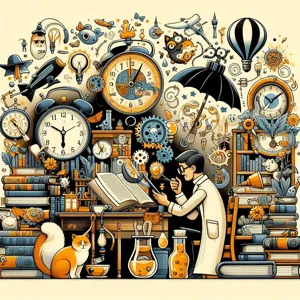
In today’s digital age, social media and online book communities serve as invaluable resources for discovering new reads that resonate with your tastes. Platforms like Goodreads, Instagram, and TikTok are teeming with book lovers who share their thoughts and recommendations, often creating vibrant discussions around your favorite genres and authors. By engaging with these communities, you can tap into a wealth of knowledge and enthusiasm that will help you unearth hidden gems you might not encounter otherwise.
Consider joining book clubs on platforms like Facebook or Reddit, where members enthusiastically exchange reviews and suggest titles based on similar reading experiences. These groups often host themed reading challenges or buddy reads, providing a structured way to explore new works while connecting with fellow bibliophiles. Not only will you discover titles that align with your interests, but you’ll also gain insights into the themes, writing styles, and character development that resonate most with readers like you.
Moreover, leveraging hashtags on Instagram, such as #Bookstagram or #BookRecommendations, can lead you down a rabbit hole of engaging content. Here, you’ll find stunning book photography, enthusiastic reviews, and curated lists that highlight upcoming releases or overlooked classics. TikTok’s #BookTok has rapidly become a must-follow for avid readers, where short, engaging videos offer quick recommendations and reviews, often sparking trends around must-read titles.
Don’t hesitate to ask for recommendations from your social circles, too. Your friends and family may have similar tastes and can point you toward books they’ve thoroughly enjoyed based on your preferences. By actively participating in these online and offline conversations, you’ll not only stay informed about the latest releases but also build a personalized reading list filled with books that truly speak to your literary soul. In this interconnected world of book lovers, your next favorite read is just a conversation or click away!
6. The Power of Book Blogs and Vlogs
In the age of digital media, book blogs and vlogs have emerged as powerful tools for discovering your next great read. These platforms bring together passionate readers and insightful commentary, creating a vibrant community where literary enthusiasts can share their thoughts and recommendations. Book bloggers often delve deep into their favorite genres, highlighting both popular titles and hidden gems that you might not stumble upon in a standard bookstore or library. Their well-crafted reviews and personal anecdotes provide a unique lens through which to view potential reads, allowing you to gauge whether a book aligns with your tastes.
On the other hand, book vlogs—often found on platforms like youtube and Instagram—bring a dynamic visual element to book discovery. Through engaging videos, vloggers share their reactions to new releases, participate in reading challenges, and even provide virtual bookshelf tours. This multimedia approach not only showcases the excitement of reading but also helps you connect with the personalities behind the recommendations. Many vloggers also create themed content, such as “If You Liked [Author], You’ll Love [Book],” which can be a goldmine for readers looking to explore works similar to their favorites.
Moreover, the interactive nature of both blogs and vlogs allows for community engagement. You can leave comments, ask questions, and even request specific recommendations, creating a dialogue that enriches your reading experience. Engaging with these platforms will not only help you uncover your next favorite book but also immerse you in a community of fellow readers who share your passions. So grab your device, dive into the world of book blogs and vlogs, and unlock a treasure trove of literary discoveries just waiting to be explored!
7. How to Use Genre Tags and Keywords Effectively

When it comes to finding your next great read, understanding how to use genre tags and keywords effectively can be a game changer. Genre tags are the breadcrumbs that lead you to books that align with your interests, while keywords can help you explore the nuances within those genres.
Start by familiarizing yourself with the genre tags associated with your favorite authors’ works. If you adore the gripping suspense of a thriller by Gillian Flynn, dive into genre tags like “psychological thriller” or “domestic suspense.” These tags serve as gateways to discovering other authors who craft similar narratives, ensuring that the thrill of anticipation stays alive in your reading journey.
Equally important are the keywords that accompany books in online databases, libraries, and bookstores. Use specific keywords that relate to elements you enjoy, such as “post-apocalyptic,” “coming-of-age,” or “magical realism.” This targeted approach not only narrows your search but also uncovers hidden gems that might not fall under your usual reading radar.
Many book platforms and retailers allow you to filter search results by genre and offer recommendations based on your previous reads. Utilize these features to create a tailored reading list that reflects your tastes. Joining online reading communities or forums can also enhance your search, as fellow book lovers often share insights and suggestions based on genre tags and keywords.
Finally, don’t hesitate to experiment! Sometimes, the most rewarding reads come from exploring genres you’ve never considered. By leveraging genre tags and keywords, you can embark on a literary adventure that not only broadens your horizons but also deepens your appreciation for storytelling in all its forms. So, grab your favorite beverage, settle into a cozy nook, and let the quest for your next beloved book begin!
8. The Role of Bookstores and Libraries in Finding New Titles
When it comes to discovering new books that resonate with your tastes, bookstores and libraries play an invaluable role in connecting readers with potential favorites. These vibrant spaces are treasure troves of literary wonders, often overflowing with titles just waiting to be explored.
### The Charm of Bookstores
Stepping into a local bookstore is like embarking on an adventure. The air is filled with the scent of fresh pages and coffee, and the shelves brim with an eclectic mix of genres. Many independent bookstores curate their selections based on community interests, offering personalized recommendations that can lead you to hidden gems. Don’t hesitate to strike up a conversation with the staff; they are usually passionate readers themselves and can provide insights into new releases that align with your preferences. Look out for themed displays or “staff picks”—these curated collections often highlight books that might not have received mainstream attention but are nonetheless captivating.
Additionally, many bookstores host events such as author signings, book clubs, and reading groups. Participating in these gatherings can deepen your connection to literature while also introducing you to new authors and titles you may have never considered. Plus, the camaraderie of fellow book lovers can spark discussions that broaden your literary horizons.
### The Wealth of Libraries
Libraries, on the other hand, offer an equally rich landscape for discovering new reads, often with the added benefit of no cost. With access to vast catalogs that include both physical books and digital offerings through platforms like OverDrive or Libby, you have a wealth of options at your fingertips. Don’t overlook the library staff—they are skilled in helping patrons find books tailored to specific tastes and can often recommend lesser-known authors that align with your favorite genres.
Many libraries also organize programs such as book talks, workshops, and themed reading challenges that can inspire you to venture outside your usual selections. Keep an eye out for “new arrivals” sections or genre-specific displays, as these can introduce you to upcoming titles that might just become your next obsession.
### The Community Connection
Both bookstores and libraries foster a sense of community among readers, making them essential hubs for literary exploration. Whether it’s by browsing the latest releases, engaging in discussions, or attending events, these spaces not only help you find your next great read but also connect you with others who share your passion for books. So the next time you’re on the hunt for your next literary adventure, don’t forget to explore your local bookstore or library; you may just uncover your new favorite author or genre waiting to be discovered.
9. Reading Lists and Curated Collections
In the vast ocean of literature, finding your next great read can sometimes feel overwhelming. This is where reading lists and curated collections come into play, serving as your trusted compass in the literary world. Many bookstores, both online and brick-and-mortar, offer specialized reading lists tailored to specific genres, themes, or even moods. These collections are often curated by passionate staff members or book enthusiasts who understand the nuances of what makes a book resonate with readers.
For instance, if you adore the gripping suspense of thrillers by authors like Gillian Flynn or Harlan Coben, you might find curated lists titled “Must-Read Thrillers” or “Psychological Thrills” that introduce you to lesser-known gems alongside popular titles. Similarly, genre-specific collections such as “Romantic Reads for a Cozy Night In” or “Epic Fantasy Adventures” can guide you toward books that align perfectly with your interests.
Furthermore, many literary blogs and online platforms, such as Goodreads or Book Riot, regularly update their lists of recommended reads based on current trends, seasons, or specific subjects. These lists not only provide a diverse array of options but also often include reader reviews and ratings, giving you insight into what fellow book lovers think before you dive in.
Additionally, consider subscribing to newsletters from your favorite authors or publishers. They often share reading lists that reflect their influences or highlight upcoming releases that they believe will resonate with their audience. By tapping into these resources, you can effortlessly explore new titles and authors, ensuring that your bookshelf is always brimming with books you’ll love. Embrace the joy of discovery with reading lists and curated collections, and unlock a treasure trove of stories waiting to be explored!
10. The Benefits of Book Clubs and Reading Groups
Joining a book club or reading group can be a transformative experience for any book lover, offering a plethora of benefits beyond just the joy of reading. Firstly, these groups provide a communal space where you can dive deeper into the narratives and themes of your favorite books. Engaging in discussions with fellow readers can illuminate perspectives you may not have considered, enriching your understanding and appreciation of the text. Whether it’s dissecting a complex character’s motivations or debating the author’s intent, these dialogues can lead to a more profound connection with the material.
Additionally, book clubs often encourage you to explore genres and authors you might not typically gravitate towards. The curated reading lists foster a sense of adventure, broadening your literary horizons and introducing you to hidden gems. This exposure can lead to discovering new favorites, thus enhancing your reading repertoire.
Moreover, the social aspect of book clubs cannot be overlooked. They create a supportive community and a sense of belonging among like-minded individuals who share your love for literature. This camaraderie can motivate you to set aside time for reading amidst a busy schedule, as you’ll look forward to the next meeting and the lively discussions that await.
Lastly, participating in a book club can foster accountability, pushing you to finish books in a timely manner and ensuring you’re constantly engaging with new content. So, whether you join a local group or connect with readers online, immersing yourself in a community of book lovers can truly unlock new reads and deepen your passion for literature.
11. Exploring Author Interviews and Recommendations
Diving into author interviews and recommendations can be a treasure trove for avid readers looking to discover their next favorite book. Many authors, in the course of sharing their insights, often mention influences and inspirations that shaped their writing. These interviews provide a unique glimpse into their creative process, revealing the books and authors that have left an indelible mark on their literary journey.
When you listen to an author discuss their favorite reads, you not only gain a deeper understanding of their work but also uncover a plethora of hidden gems. For instance, if you enjoy the atmospheric prose of a contemporary writer, they might recommend classic authors who inspired them, or perhaps lesser-known contemporaries who share a similar style or theme. This connection can lead you down unexpected paths, guiding you to books that resonate with your tastes and preferences.
Additionally, many literary podcasts and websites curate lists of author recommendations that can serve as invaluable resources. These curated lists often include a diverse range of genres and styles, ensuring that there’s something for everyone. Whether you’re in the mood for a gripping thriller, a heartwarming romance, or an evocative memoir, there’s a good chance that your favorite authors have pointed you toward a book that will ignite your passion for reading.
Remember to engage with your favorite authors on social media as well. Many authors are active on platforms like Twitter and Instagram, where they frequently share what they’re reading and who they’re inspired by. This real-time insight can lead you to current releases and hidden treasures, making your reading list more dynamic and tailored to your tastes.
Exploring author interviews and recommendations not only enhances your reading experience but also creates a deeper connection with the literary community. As you venture into the worlds crafted by others, you may find that the recommendations of your favorite authors lead you to books that become beloved parts of your own reading journey. Happy reading!
12. The Impact of Awards and Literary Prizes
When it comes to discovering new books that resonate with your literary tastes, the impact of awards and literary prizes cannot be overstated. These accolades often serve as a beacon, guiding readers toward exceptional works that have been recognized for their quality, originality, and emotional depth. Prestigious awards such as the Pulitzer Prize, the Man Booker Prize, or the National Book Award not only highlight standout titles but also introduce readers to emerging voices and innovative storytelling techniques.
Award-winning books often come with a buzz that can ignite your curiosity. Whether you’re drawn to the narrative style of a beloved author or the thematic elements of your favorite genre, checking out award winners can lead you to hidden gems that might otherwise fly under your radar. For instance, if you adore the intricate character development found in literary fiction, you may find your next obsession in a novel that has recently been nominated for or won a major prize.
Moreover, literary prizes frequently spotlight diverse authors and perspectives, expanding your reading horizons beyond mainstream narratives. Many award committees prioritize works that challenge conventions and push boundaries, offering readers a chance to engage with stories that reflect a broader spectrum of human experience.
Consider exploring lists of recent winners or nominees in categories that speak to your interests. Many websites and literary blogs curate these lists, providing insight into what makes these books worthy of recognition. By aligning your reading choices with award-winning literature, you not only enhance your personal library but also become a part of a larger conversation about the literary world. So, the next time you seek a new read, let the impact of awards and literary prizes illuminate your path to discovering books that will captivate and inspire you.
13. Sampling Books: Using First Chapters and Excerpts
Sampling books through first chapters and excerpts is a delightful way to immerse yourself in a new literary world without committing to a full read. This technique allows you to dip your toes into the pool of potential favorites, giving you a taste of an author’s style, voice, and storytelling prowess before diving in headfirst.
Imagine scrolling through an online bookstore or an e-reader app, where tantalizing snippets from various novels beckon you. The first chapter can be a powerful indicator of whether a book will resonate with you. Does the prose flow smoothly? Is the character’s voice engaging? Are you immediately drawn into the plot? These early pages can spark excitement, pulling you in with vivid descriptions, intriguing dialogue, or a compelling narrative hook that leaves you eager for more.
Many platforms, including independent bookstores and major retailers, offer the chance to read excerpts from both new releases and timeless classics. You can also find first chapters featured on authors’ websites, in newsletters, or on social media platforms, where writers often share a sneak peek to entice potential readers. Take advantage of these free samples; they are the literary equivalent of trying on a piece of clothing before buying it, giving you the opportunity to see how well it fits your tastes.
Additionally, consider exploring curated lists or recommendation engines that focus on your favorite genres or authors. These resources often highlight passages from books that align with your established preferences, enhancing your chances of finding your next beloved read. Sampling books not only makes the discovery process enjoyable but also empowers you to make informed choices, ensuring that each new addition to your reading list is one you’ll cherish. So, grab your favorite beverage, settle into a cozy nook, and start sampling—your next great read might just be a chapter away!
14. Trying Out Similar Genres and Cross-Genre Reads
Exploring similar genres and cross-genre reads can open up a treasure trove of new literary adventures that resonate with your favorite authors while introducing fresh elements to your reading list. If you’ve found yourself enchanted by a particular author, it’s worth delving into books that share thematic or stylistic similarities. For instance, if you adore the intricate world-building of fantasy novels, consider trying out science fiction that offers a blend of imaginative settings and thought-provoking concepts. The line between genres is often blurred, and many authors sprinkle a bit of magic from one genre into another, creating unique narratives that appeal to a broader audience.
Cross-genre reads can be particularly delightful. Imagine a historical fiction novel that weaves in elements of romance or a mystery that unfolds within a speculative fiction framework. By venturing into these hybrid genres, you not only expand your reading horizons but also discover unexpected connections that may deepen your appreciation for the books you already love.
Additionally, exploring sub-genres can be a game-changer. If you’re a fan of literary fiction, why not dip your toes into literary thrillers that maintain that rich character development while keeping you on the edge of your seat? Or if you’re a romance enthusiast, consider contemporary fiction that features romantic subplots woven into coming-of-age stories.
Utilizing online platforms like Goodreads, where you can filter recommendations based on multiple genres, is an excellent way to uncover these hidden gems. Engage with communities that share similar tastes; often, fellow readers will suggest titles that you may have overlooked. Ultimately, trying out similar genres and cross-genre reads not only enriches your reading experience but can lead you to find your next favorite book, waiting just around the corner. Happy reading!
15. Keeping a Reading Journal to Track Discoveries
Keeping a reading journal is an invaluable tool for any book lover looking to unlock new literary treasures. Imagine having a dedicated space where you can meticulously document your literary journey, capturing your thoughts, feelings, and insights about each book you read. Not only does this practice enhance your reading experience, but it also serves as a personalized catalog of discoveries that you can refer back to whenever you seek your next great read.
In your reading journal, start by noting down the titles of books you’ve enjoyed, along with their authors and genres. This simple act creates a visual map of your preferences, helping you identify patterns in your tastes. Are you drawn to historical fiction or perhaps thrillers? Do you have a penchant for lyrical prose or a preference for fast-paced narratives? By tracking what resonates with you, you can gain a clearer understanding of your reading identity.
But don’t stop there—use your journal to jot down memorable quotes, character analyses, and even your reactions to plot twists. This reflection not only deepens your engagement with the material but also makes revisiting those books a nostalgic experience. When you come across an author or genre that piques your interest, take a moment to research similar works and record those titles in your journal. Over time, your reading journal will evolve into a treasure trove of recommendations tailored just for you.
Additionally, consider adding a section for books you want to read in the future, perhaps inspired by recommendations from friends, online reviews, or even social media discussions. This proactive approach ensures that you’re always prepared for your next literary adventure, minimizing those moments of indecision in the bookstore or library.
Ultimately, keeping a reading journal is more than just note-taking; it’s about cultivating a deeper relationship with the written word. As you reflect on your discoveries, you’ll find that the world of literature is vast and full of hidden gems just waiting to be uncovered. So, grab a notebook or open a digital document, and start chronicling your reading journey today—you’ll be amazed at how it transforms the way you discover and enjoy books!
As we wrap up our exploration of how to discover books you’ll love based on your favorite authors and genres, we hope you feel inspired and equipped to embark on your next reading adventure. By leveraging the strategies we’ve discussed—such as exploring similar authors, delving into curated reading lists, and utilizing online platforms—you can unlock a treasure trove of literary gems that resonate with your unique tastes. Remember, the world of books is vast and ever-evolving, so don’t hesitate to experiment with new genres and authors as you expand your reading horizons. Happy reading, and may your next page-turner be just around the corner!

